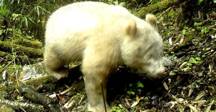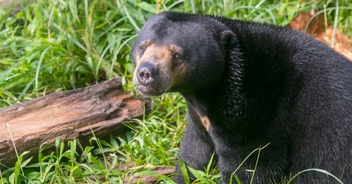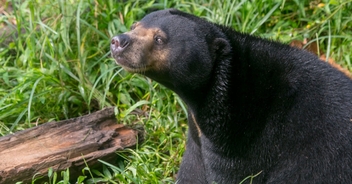A giant all-white albino panda has been spotted in China for the very first time, the New York Times reports.
Li Sheng, from the Species Survival Commission of the International Union for Conservation of Nature, said that the animal was the first fully white giant panda to be documented in the country.
Indeed, there have been sightings of brown-and-white pandas in Qinling, a region in the northwestern Chinese province of Shaanxi.
Meet Qizai, one of the few brown pandas in the world:Wild pandas are not usually the simplest animals to study as they typically live by themselves in remote areas. In fact, a Chinese conservation center has developed a facial recognition app to aid in distinguishing between different pandas - in a bid to facilitate research conducted into the mammal. Since 2017, close to 10,000 photographs of pandas have been analyzed from the database.
According to a statement from local authorities, the panda - who is estimated as being one to two years of age - was photographed using an infrared camera at the Wolong National Nature Reserve in the southwestern province of Sichuan in April.
The panda's white fur can be attributed to albinism, a condition which causes partial or complete loss of pigmentation.
“I personally think it’s quite random for it to be discovered, since albinism manifests itself so infrequently,” Dr. Li commented in a telephone interview. “This was recorded just in time.”

While albinism can lead the individual with the condition to develop sensitivity to light, generally, its symptoms do not impact on their quality of life.
“Based on the photo, albinism has not affected the life of the white panda much,” said Dr. Li, a researcher at Peking University. “It looks quite well, quite strong.”
According to Duan Zhaogang, the Communist Party secretary of the Wolong district, the reserve will be increasing its use of infrared cameras. And, as a result, authorities plan to track the panda's progress and movements and any potential offspring it might have.



